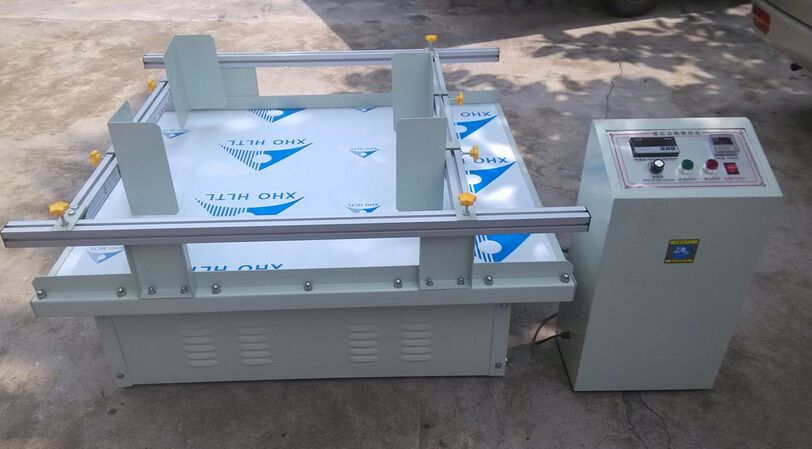ISTA 3G E-commerce Parcel Distribution Simulation
The ISTA (International Safe Transit Association) Standard 3G is a widely recognized set of guidelines designed to ensure that e-commerce parcels are safely and effectively transported through distribution channels. This standard focuses on the simulation of real-world transport conditions, ensuring that products withstand the rigors of transit without damage or degradation.
The ISTA 3G E-commerce Parcel Distribution Simulation involves a series of tests aimed at replicating the environmental stresses encountered during transportation. These include vibration, temperature fluctuations, and impact due to handling and sorting processes in distribution centers. The primary goal is to validate that packaging materials are capable of protecting goods throughout their journey from manufacturer to consumer.
The testing process typically involves several key components:
- Impact Testing: Simulating the impact forces experienced during sorting, loading, and unloading processes. This includes drop tests on various surfaces such as concrete or wood.
- Drop heights vary depending on product size and weight but can range from 25 cm to 1 meter.
- Testing is conducted at different angles to simulate real-world scenarios.
- Vibration Testing: Replicating the vibrations experienced during transit by trucks, trains, or shipping containers. Vibration levels and duration are calibrated based on typical transport conditions.
- Temperature Cycling: Simulating temperature changes that occur throughout the distribution network to ensure product integrity in varying climates.
The ISTA 3G standard is particularly relevant for e-commerce businesses, where parcel handling and sorting can be more aggressive compared to traditional retail. It ensures that products are robust enough to handle the challenges of modern logistics systems without compromising quality or customer satisfaction.
Compliance with ISTA 3G not only enhances product safety but also builds brand trust by demonstrating commitment to high-quality packaging solutions. This is crucial in an era where consumer expectations for delivery reliability and product integrity are at an all-time high.
International Acceptance and Recognition
The ISTA 3G E-commerce Parcel Distribution Simulation has gained widespread acceptance across the global logistics industry. Its recognition is due to its comprehensive approach to packaging testing, which aligns with international standards such as ISO 9001 for quality management systems.
Many leading e-commerce platforms and logistics providers mandate compliance with ISTA 3G as part of their supplier certification processes. This ensures that products are transported in a manner that minimizes damage and meets consumer expectations, thereby reducing return rates and enhancing customer satisfaction.
The standard's international recognition is further bolstered by its alignment with global regulatory frameworks. For instance, the European Union's REACH (Registration, Evaluation, Authorization, and Restriction of Chemicals) regulations often reference ISTA guidelines to ensure that packaging materials are safe for use in transportation.
By adhering to these standards, companies can demonstrate their commitment to sustainable practices, which is increasingly important in the face of growing consumer awareness about environmental issues. The ISTA 3G E-commerce Parcel Distribution Simulation thus serves as a benchmark for best practices in packaging and transport logistics.
Competitive Advantage and Market Impact
In an increasingly competitive market, compliance with ISTA 3G provides significant advantages. Firstly, it enhances the reliability of product delivery, reducing the risk of damage during transit. This is particularly important for e-commerce businesses where customer satisfaction is directly tied to on-time deliveries.
Compliance also contributes to brand reputation and trust. Consumers are more likely to purchase from brands that demonstrate a commitment to quality and safety in their supply chain processes. By adhering to ISTA 3G standards, companies can build a positive image among consumers and stakeholders.
The standard's focus on environmental sustainability adds another layer of competitive advantage. As environmental concerns continue to gain prominence, customers are more inclined to support businesses that prioritize eco-friendly practices. Compliance with ISTA 3G aligns with these values and helps companies stand out in the market.
Moreover, compliance can streamline regulatory processes by ensuring that packaging meets international standards. This reduces the likelihood of product recalls or delays at ports of entry, further enhancing operational efficiency. Overall, adherence to ISTA 3G is a strategic move for businesses aiming to maintain and grow their market share in today's competitive landscape.
Use Cases and Application Examples
| Application Example | Description |
|---|---|
| Electronics Packaging | Vibration testing is crucial for electronic devices to ensure they can withstand the jolts and bumps encountered during sorting in warehouses. The use of shock-absorbing materials like foam inserts or bubble wrap ensures that sensitive components remain undamaged. |
| Fragile Glassware | Drop tests are essential for glass products to determine the optimal cushioning material and packaging design. Proper padding can prevent breakage during transit, ensuring product integrity arrives at the destination intact. |
| Pharmaceuticals | Temperature cycling tests are vital for pharmaceutical products to ensure they remain within acceptable temperature ranges throughout their distribution journey. This prevents potential degradation of active ingredients and maintains product efficacy. |
| Fashion Accessories | Impact testing is critical for accessories like watches or jewelry, which can be easily damaged during sorting processes. Proper packaging ensures that these delicate items arrive safely at their destination. |
| Bulk Commodities | Vibration testing is necessary for bulk commodities such as grains or minerals to ensure they are securely packed and can withstand the rigors of transportation without shifting or leaking. |





